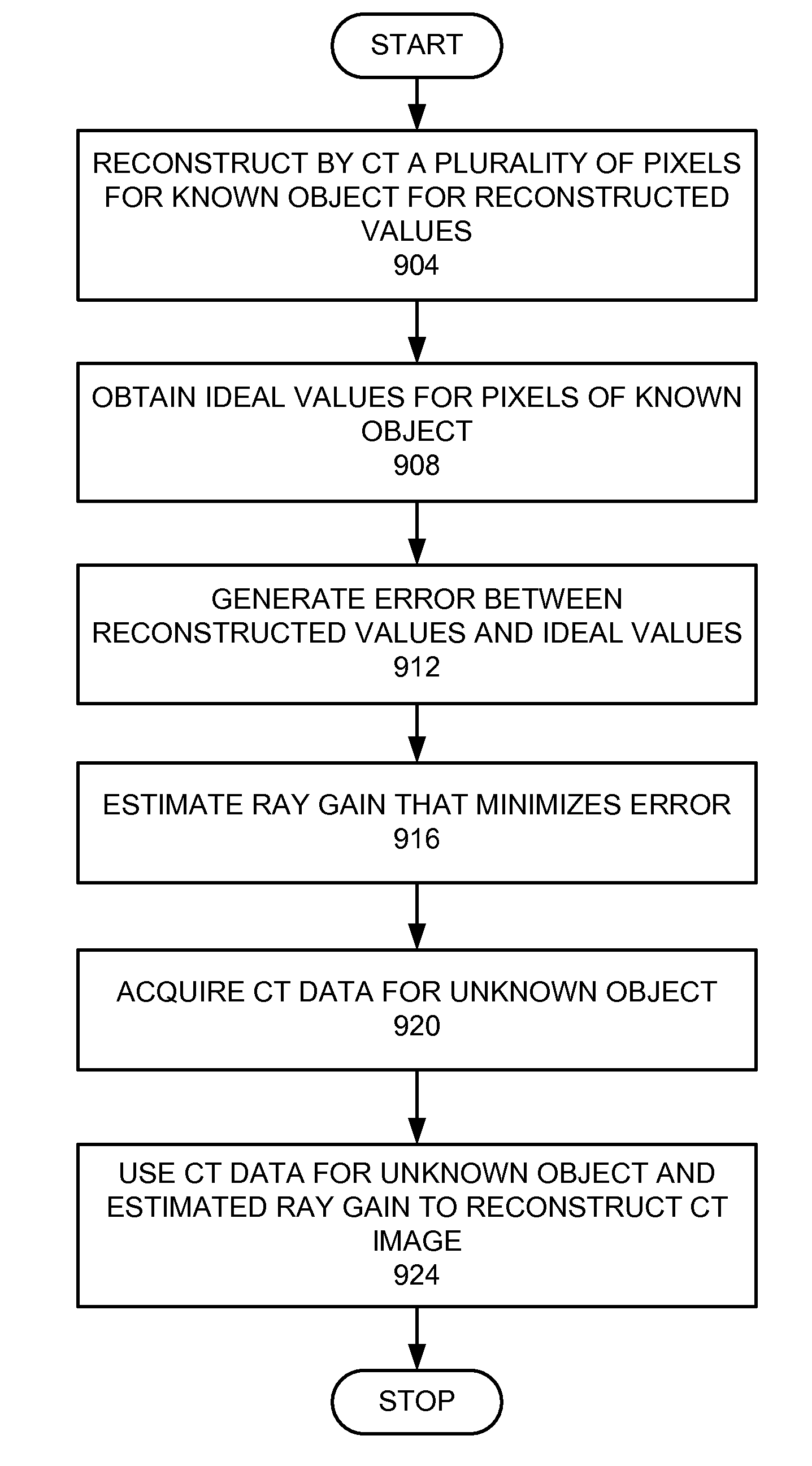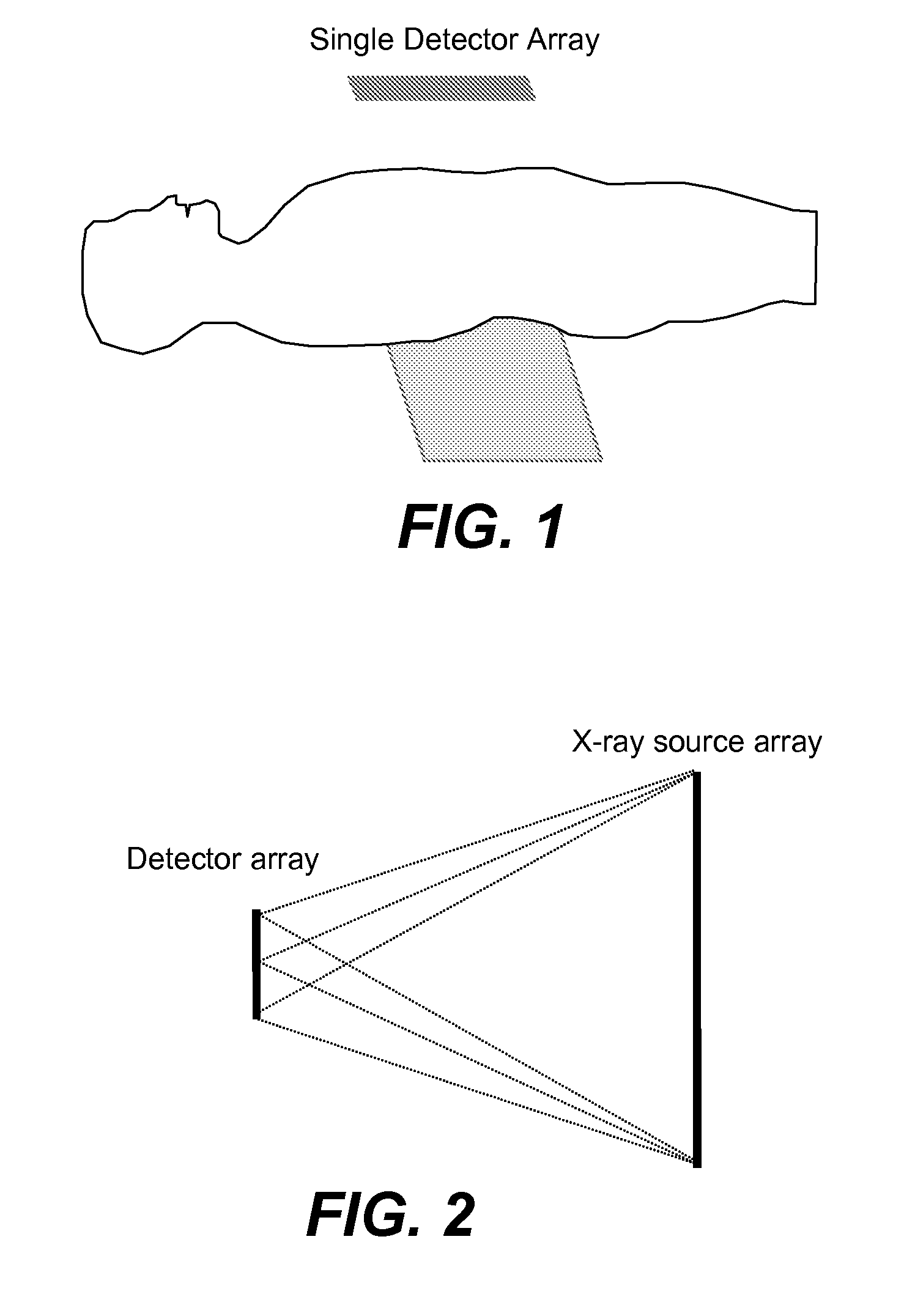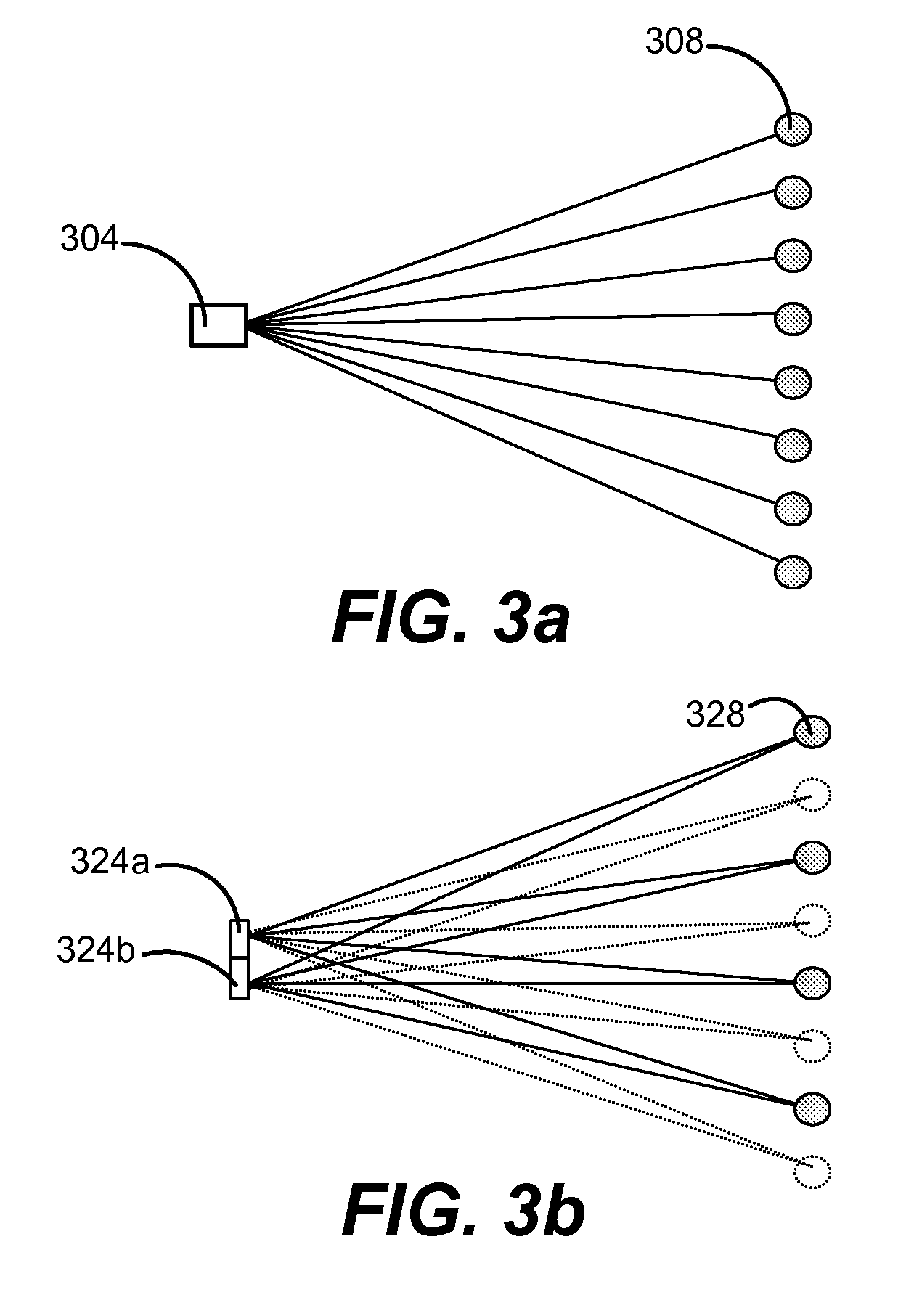Gain correction for a CT system
a ct system and gain correction technology, applied in the field of xray imaging, can solve problems such as errors relating to differences between reconstructed values and ideal values generated, and achieve the effect of reducing errors
- Summary
- Abstract
- Description
- Claims
- Application Information
AI Technical Summary
Benefits of technology
Problems solved by technology
Method used
Image
Examples
Embodiment Construction
[0019]An inverse geometry volumetric CT (IGCT) system uses a large source array opposite a smaller detector array. 2D IGCT reconstruction may be performed by using gridding. One application of the present invention is 2D IGCT reconstruction without gridding. The IGCT raw data can be viewed as being composed of many fan beams, each with a detector at its focus. Each projection is undersampled but the missing samples are provided by other views. In order to get high spatial resolution, zeros are inserted between acquired projection samples in each fan beam, and reconstruction is performed using a direct fan beam reconstruction algorithm. Initial IGCT reconstruction results showed ringing artifacts caused by the fact that the rho samples in the ensemble of views are not equally spaced. An example of the invention provides a method for correcting the errors that reduces the artifacts to below one Hounsfield Unit.
[0020]An inverse geometry volumetric CT (IGCT) system uses a large-area sca...
PUM
 Login to View More
Login to View More Abstract
Description
Claims
Application Information
 Login to View More
Login to View More - R&D
- Intellectual Property
- Life Sciences
- Materials
- Tech Scout
- Unparalleled Data Quality
- Higher Quality Content
- 60% Fewer Hallucinations
Browse by: Latest US Patents, China's latest patents, Technical Efficacy Thesaurus, Application Domain, Technology Topic, Popular Technical Reports.
© 2025 PatSnap. All rights reserved.Legal|Privacy policy|Modern Slavery Act Transparency Statement|Sitemap|About US| Contact US: help@patsnap.com



